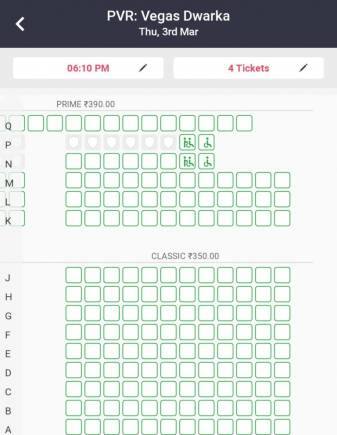Discover the latest business news, Sensex, and Nifty updates. Obtain Personal Finance insights, tax queries, and expert opinions on Moneycontrol or download the Moneycontrol App to stay updated!
The Union Minister of Information and Broadcasting Anurag Thakur announced that the government has notified the guidelines of Accessibility Standards to open up the theatrical experience to a segment of the population that was previously excluded. (Image via X)
The government on Friday notified guidelines to make movies more accessible to visually and hearing-impaired persons that make it mandatory for filmmakers to incorporate audio descriptions and closed captions in their films.
The Guidelines of Accessibility Standards in the Public Exhibition of Feature Films in Cinema Theatres also ask cinema theatres to use separate equipment during regular shows such as Mirror Captions, Closed Captioning Smart Glasses, Closed Caption Stands, Closed Caption display below the Screen or Headphones/Earphones for Audio Description (AD).
Announcing in his tweet this week, Union Minsiter of Information and Broadcasting Anurag Thakur wrote, 'In keeping with the vision of Hon'ble PM Shri Narendra Modi ji, to create an inclusive society giving special attention to opportunity and accessibility for Divyangjan, I'm glad to announce that @MIB_India and the govt. has taken a great step in this direction, opening up the theatrical experience to a segment of the population that was previously excluded by notifying the guidelines of Accessibility Standards."
The key features of these accessibility standards are:
- Ensuring Accessibility of films to Persons with Hearing and Visual Impairment
- Global best practices to prescribe the accessibility needed by persons with Hearing and Visual Impairment.
- At least one accessibility feature each for the hearing impaired and visually impaired, i.e. AD & CC/OC.
- 'Closed captioning': by which both the audio dialogue and sound representations of a film are made visible.
- Indian Sign Language interpretation by interpreters must be provided in a picture-in-picture mode.
Thakur then added that "these comprehensive guidelines should establish a robust foundation for accessible feature film content and theatre infrastructure, fostering greater inclusion."
Audio Description (AD) is an overall system that assists guests with visual impairments (VI). They can also elect to hear just the movie soundtrack at a higher volume via the headphones. Closed Captions (CC) is a system that assist guests who are deaf or hard of hearing. The device has a small screen that displays closed captions as the movie is playing, allowing them to read and watch the screen at the same time. Neither of these devices impact the viewing of other cinema audience. These are personal devices used by the PwDs at their seats. Open Captions (OC) allow the deaf and hard of hearing to watch films with text and sound descriptions displayed on screen (English subtitles).
While a welcome step, it remains to be seen if provisions like "picture-in-picture" mode, which is a window within the main film, will be made mandatory for all screenings or there will be special screenings, like there's an American Sign Language (ASL) version of Ant-Man (2015) for special shows.
But it isn't about just the content itself being accessible and intelligible for persons from all walks of life but the provisions to make film-viewing accessible to persons with disabilities.
Physical accessibility, however, remains a big issue for wheelchair-bound persons with disabilities. If they want to watch a movie at the theatres, they end up being made to sit near the Exit door, away from those who have accompanied them to the theatre. Among the rare movie theatres in India is Jaipur's Raj Mandir.
"Ever since as a child, I've been a huge movie buff. As cinema halls are majorly inaccessible, we watched whatever movies premiered on TV. But this changed when I visited Raj Mandir in Jaipur! This single-screen movie theatre is famous the world over for its astounding interior design. But did you know that the screen has a ramped entrance? I was over the moon when I saw the long ramp that swirled and disappeared into the theatre!," wrote Kavya Mukhija, a person with disability and a Moneycontrol contributor. Wheelchair-bound Mukhija, in March 2022, for a screening of Gangubai Kathiawadi, was made to sit next to the Exit, away from her parents, in PVR Cinemas at Vegas Mall in Delhi's Dwarka, despite PVR showcasing wheelchair seats in its ticketing systems.

(With inputs from PTI)